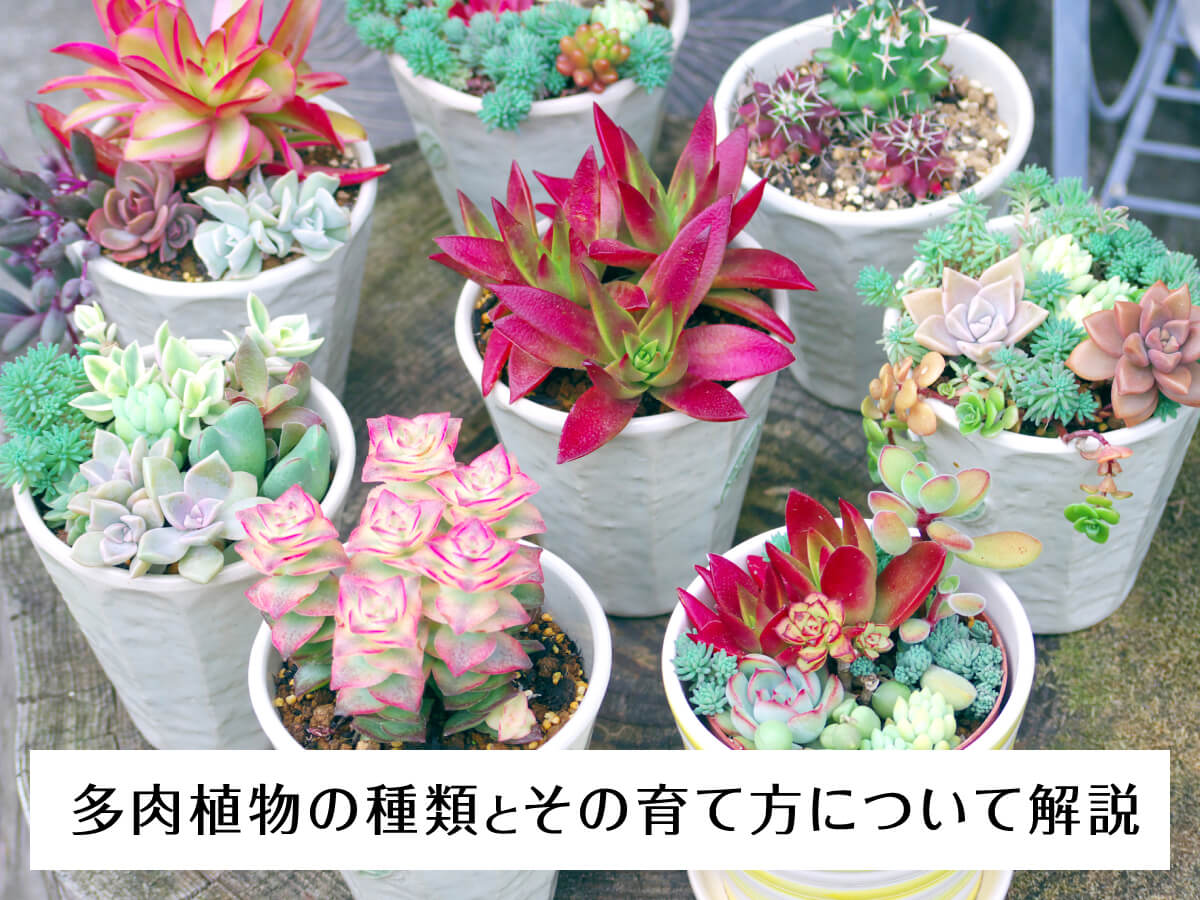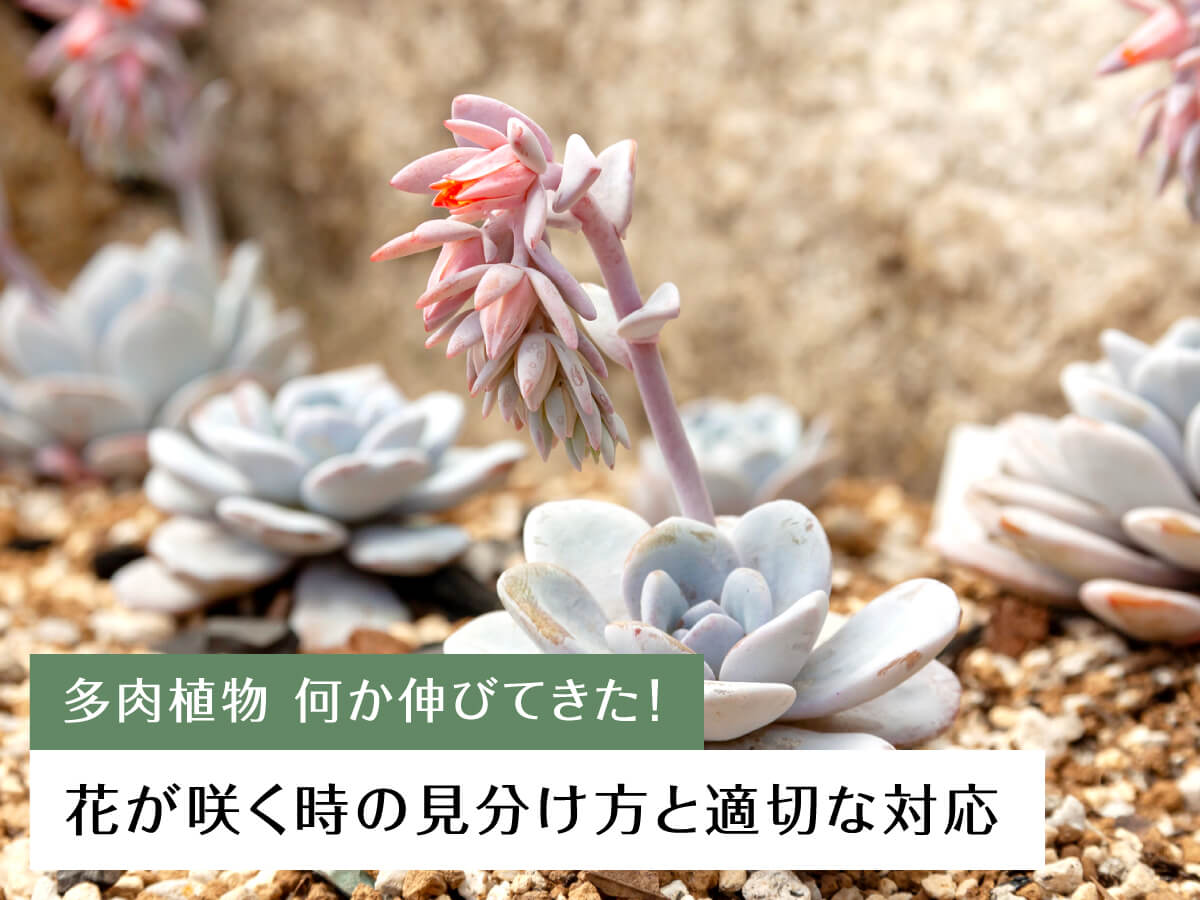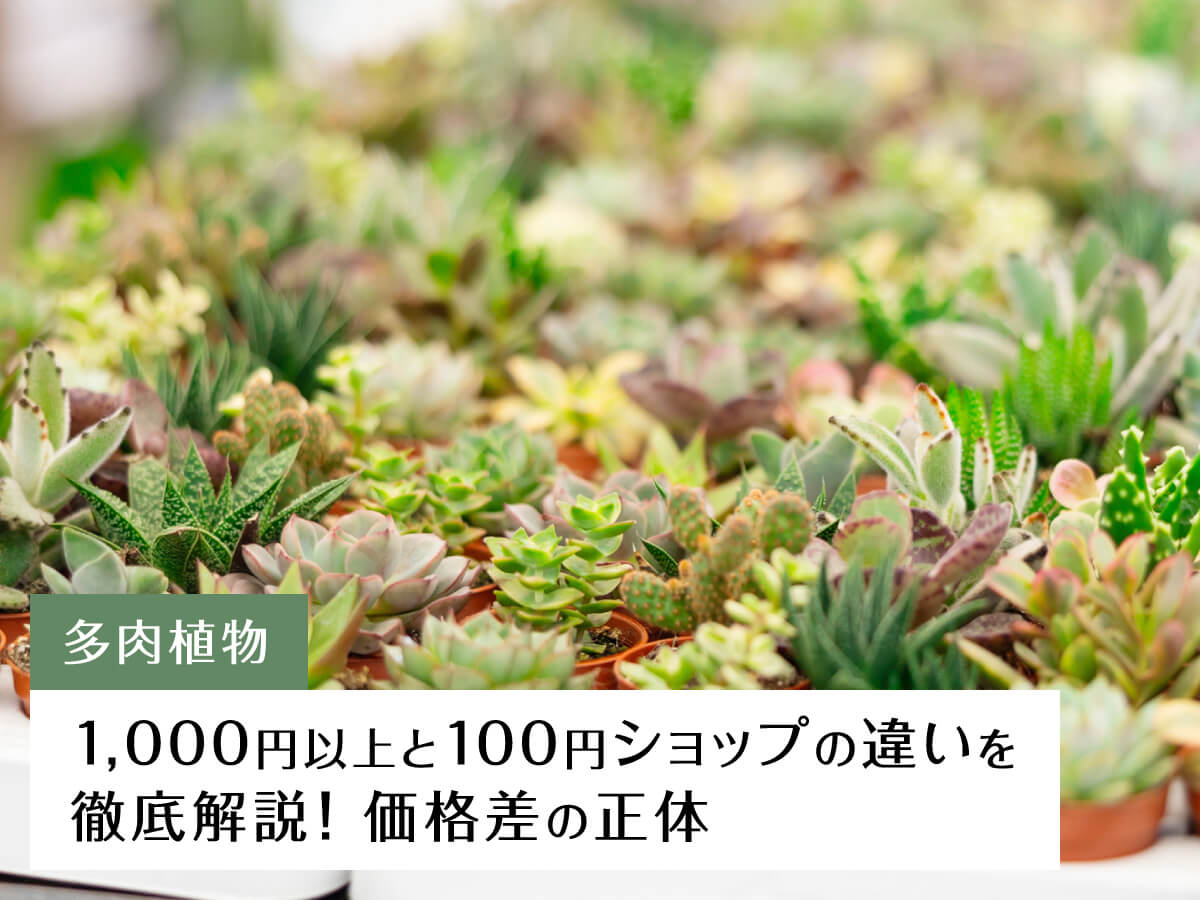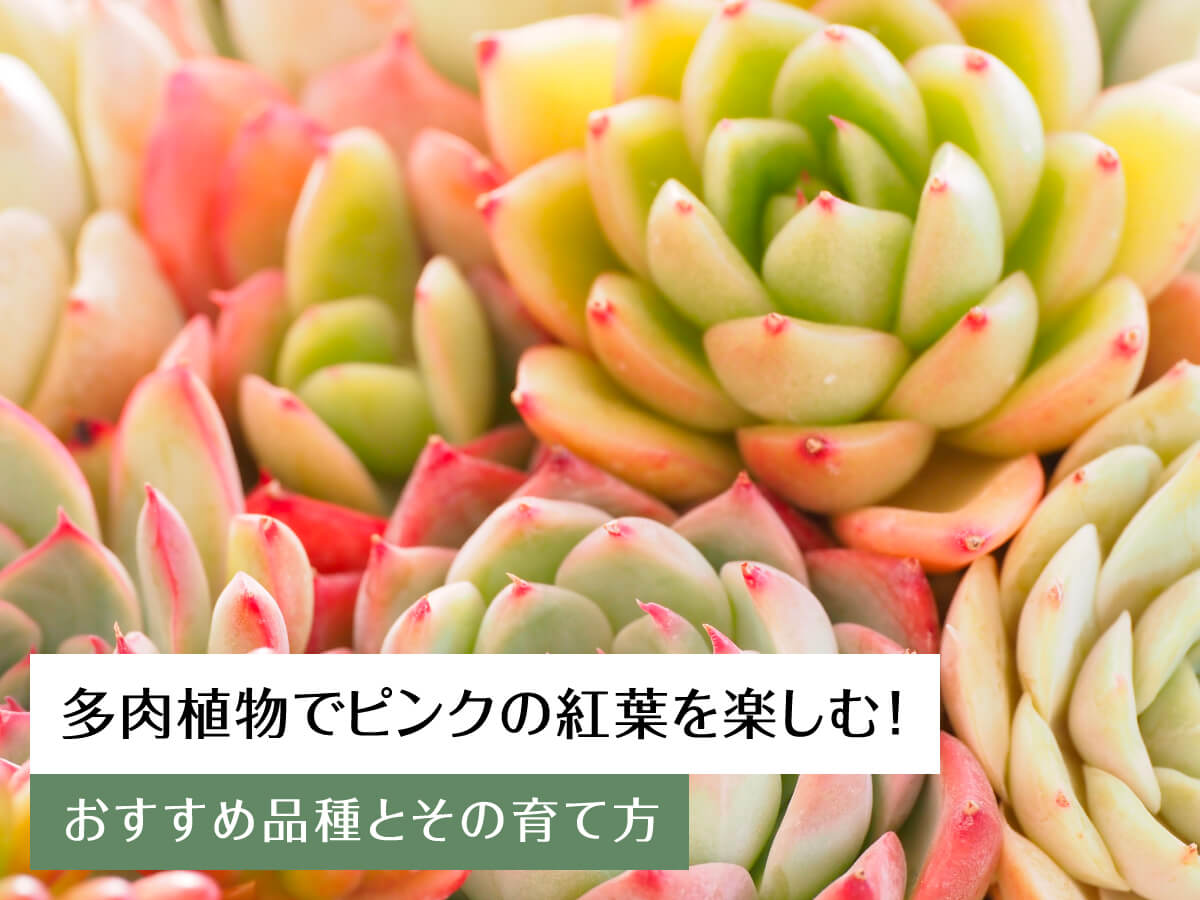Explanation of types of succulents and how to grow them
Succulents are valued by many people for their unique shape and ease of growing. However, there are many types of succulents. The way they are grown and the environment they are suitable for vary greatly depending on the type. In this article, we will explain the various types of succulents and the key points for growing each type in optimal conditions. We will explain in detail the growing environment, the effects of sunlight, the timing and amount of watering, how to choose the appropriate soil, and precautions when repotting. We will also tell you how to increase and deal with them, and we hope that your succulent life will be more enjoyable and fulfilling.
1. What are succulents?
What exactly are succulents?
1.1. Definition of succulents
First of all, what are succulents? Succulents, also known as ``succulent plants,'' are a general term for plants whose leaves, stems, roots, etc. are partially or completely fleshy and store large amounts of water. This is the result of adaptation to living in environments with poor moisture, such as arid regions or areas exposed to scorching sunlight, and due to these characteristics, succulents are generally considered to be drought tolerant. In addition, with a variety of shapes and colors, you can enjoy a variety of elegance depending on your mood.
1.2. Characteristics of succulents
Succulents have a high ability to retain nutrients and water, which can be stored in their thick leaves and stems. This property allows it to survive even in harsh climates and environments. In addition, their shapes vary depending on the type, and at first glance, they are so diverse that you might not think they are exactly the same plant. The leaves come in a wide variety of colors, from green to red, purple, and pure white, allowing you to enjoy the seasonal changes. Additionally, succulents are generally easy to grow, so even beginners can easily enjoy them.
1.3. Growing environment for succulents
Succulents generally prefer sunlight, but some prefer shade. Therefore, it is important to choose a sunny location when growing, but it is better to avoid strong direct sunlight in summer. In addition, although it is drought tolerant, it is necessary to water it moderately and take measures against the summer heat and winter cold. Additionally, it is important to use the appropriate soil and, if potted, choose a pot with good drainage. By keeping these things in mind and creating the appropriate environment, you can enjoy succulents that grow abundantly.
2. Types of succulents and their characteristics
There are many types of succulents, and their shape, color, and flower appearance vary greatly depending on the type. Although they are called "succulent," they come in a variety of shapes, including those with sturdy stems, those that look like fluffy shrubs, and those that grow like large trees. It is important to know the characteristics and growing environment of each succulent, and to grow them in a way that suits them. In addition, due to their wide variety of shapes and colors, succulents are not only used as ornamentals, but are also used as interior decorations. Here, we will explain in detail the types of succulents that are the most popular among them and their characteristics.
2.1. Main types of succulents
As the name suggests, succulents are a general term for plants with thick leaves and stems, and there are various types including cacti. Among the items you should pay attention to are varieties such as sedum, echeveria, aeonium, and crassula. All of them are popular as ornamental plants, and you can enjoy their beautiful shapes, flowers, and colors. In addition, each type requires a different growing environment and care method, so it is important to understand the characteristics of each type before caring for them.
2.2. Characteristics of individual types
First of all, sedum has excellent cold resistance, is resistant to drought, and is easy to propagate by division and leaf cuttings. Next, Echeveria is popular for its beautiful rosette-shaped leaves, and the colors are rich and beautiful. However, it is sensitive to humidity and must be grown in a well-drained environment. Aeonium is This variety has shrub-like stems that look great with its beautiful leaves, and its coloring improves when it receives sunlight and ventilation. Crassula is characterized by hard, thick leaves that look like overlapping stars when viewed from above, and there are several types named 〇〇stars that are popular.
2.3. Characteristics of popular succulents
Lithops and Peperomia are representative succulents that have become particularly popular with the recent boom in ornamental plants. Lithops is also called the "stone plant" because of its unusual appearance, and its stone-like body is actually a thick leaf, making it an ornamental plant that requires less care than it looks. Peperomia, on the other hand, is popular because it can be easily grown indoors due to its cute appearance and shade tolerance. Each succulent plant has a unique shape and color, but by understanding their characteristics and taking proper care of them, you can keep them beautiful and in good condition.
3. About the effects of sunlight
Let's take a closer look at the relationship between sunlight and succulents. Sunlight is an essential element for plants to carry out photosynthesis. Succulents are no exception and are greatly affected by sunlight. Each species has a different ability to adapt to sunlight, but insufficient light can cause problems when growing, such as delayed growth and poor coloration. On the other hand, in an environment where it receives an appropriate amount of sunlight, it will grow into a beautiful shape and enjoy rich colors. Therefore, sunlight is a very important factor in growing succulents.
3.1. Sunlight hours required for succulents
Daylight hours are directly linked to the growth and development of succulents. As a general rule, it is ideal for succulents to receive sunlight for at least half a day. However, it is not only the hours of sunlight that are important, but also its quality. Light that is not too strong just after the sun comes out in the morning and sunlight in the evening are also suitable for the growth of succulents, and the total amount of sunlight including both is required. Additionally, if growing indoors is unavoidable, or in environments where sunlight is difficult to reach, it may be important to use an artificial light source to aid photosynthesis.
3.2. Adaptability of succulents to sunlight
Succulents survive in harsh environments in nature, so they are highly adaptable to sunlight. Species that live in areas with strong sunlight, such as arid regions and highlands, have features that allow them to withstand strong sunlight. This allows you to maintain your beautiful body shape without discoloration or distortion. However, on the other hand, species that live in the shade are not strong enough to tolerate sunlight so they can grow in the shade, so it is necessary to provide them with an appropriate amount of sunlight.
3.3. Measures to take when there is insufficient sunlight
If there is not enough sunlight, the growth of succulents will be stunted. Therefore, it is important to check daily and take measures to avoid insufficient sunlight. There are endless ways to come up with ideas, such as using a blackout net to moderate direct sunlight or using a reflector to prevent light from escaping. By taking these measures, you will be able to create an ideal environment for succulents.
4. About watering succulents
Of all the ways to grow succulents, the most confusing part is probably watering them. No matter how succulent plants are said to be drought tolerant, if they are not properly watered, it will be difficult for them to survive. On the other hand, too much water can cause the roots to rot and wither, so proper watering is required. So, what exactly is "proper watering" for succulents? Here, we will explain in detail the key points of watering succulents, how to overwater them, and how to rehydrate them.
4.1. Points for watering
There are some rules for watering succulents. First of all, it is basically important to ``water thoroughly when the soil is dry.'' By allowing water to penetrate to the bottom of the container or planting soil, you can promote root growth and create conditions that allow them to absorb water and nutrients. Also, before watering next time, make sure the soil is completely dry from the previous watering. Furthermore, it is best to water in the cool hours after sunset in the summer, and after the cold in the morning has subsided in the winter.
4.2. About overwatering
Succulents prefer moderate dryness and tend to dislike humid conditions. Therefore, you need to be careful not to overwater. Especially in winter, water evaporates slowly, so it is a good idea to thin the water. If you continue to water too much, the roots may rot. Once the roots rot, it is difficult to recover, so be careful when watering. Therefore, the basic stance when it comes to watering succulents is that there is no problem with watering too little.
4.3. How to hydrate succulents
When watering most succulents, just like other houseplants, use a watering can or hose to water them thoroughly until the water comes out from the bottom of the pot. In addition to regular watering, spraying water on the leaves is another way to rehydrate the Peperomia plants listed above. Particularly in the hot and humid summer months, a lot of water evaporates, so replenishing with leaf water may be effective. However, leaf water alone is not enough water to grow the roots, so don't forget to water the roots directly. Also, since the roots of succulents are shallow and spread out, it is important to water evenly throughout the pot. In this way, the key to keeping succulents hydrated is to water them accurately and in the right amount.
5. About soil selection and replanting
One of the essential elements when growing succulents is ``selecting the soil'' and ``repotting.'' Unlike ordinary houseplants, succulents are particularly sensitive to soil contents and humidity conditions, so soil selection is an extremely important task. Also, it is necessary to repot at the right time. The reason for this is that it not only provides soil suitable for plant growth, but also prevents root entanglement and root rot. Failure to do so may affect the health and growth rate of your succulent.
5.1. Types of soil suitable for succulents
The best soil for succulents is one that drains well and dries easily. In addition, although some types of soil do not need fertilizer components at all, there are some types that are very important, and soil with a high content of organic fertilizers and lime fertilizers is said to be preferable for these types of succulent plants. I am. The easiest way is to use commercially available soil specifically for succulents, but if you want to make your own blend, it's a good idea to mix in appropriate amounts of Akadama soil, Kanuma soil, pumice, vermiculite, etc. Potted succulents have drainage holes at the bottom of the pot, which allows them to maintain a suitable level of humidity, but for types that prefer fertilizer, it is possible to grow healthier succulents by using special soil.
5.2. When to change the soil and how to repot
The ideal time to repot is spring or autumn. Repot your plants to protect them from stress during this period when temperatures are stable and succulents are actively growing. The specific method is to remove the plant from the pot and remove the old soil from the roots. After that, prepare new soil, place the succulent in the center, and secure the surrounding area with new soil. Fill with soil so that the roots are not exposed.
6. Growing environment for succulents
Succulents are popular among many people because they are easy to grow, even for beginners. However, even strong plants adapted to dry areas have difficulty growing in extreme environments. Therefore, in order to grow succulents in the best conditions, it is important to create a dedicated growing environment.
6.1. How to create an optimal training environment
Succulents are plants that especially like sunlight. Due to its characteristics, it is ideal to choose a sunny location outdoors. For types that can be grown indoors, it is recommended to grow them near a window or in a bright place. However, direct sunlight in midsummer is too strong, so if you grow it outdoors, it is best to shade it or grow it in a semi-shaded place, and if you grow it indoors, it is recommended to use curtains to provide indirect light. It is also important to choose soil with good drainage and make holes in the pot to prevent water from collecting. The appropriate temperature varies depending on the type, but care must be taken when the temperature is below 5℃.
6.2. About keeping warm in winter
Special consideration must be taken in winter, as temperatures can drop significantly. Cold resistance differs depending on the type, so you need to be careful about the temperature and room temperature for varieties that are sensitive to cold. However, indoor heating equipment is too dry for plants, so humidity control is also required. Another way to protect yourself from the cold is to use thermal sheets.
6.3. About summer cooling
On the other hand, if the temperature gets too high in the summer, succulents will feel stressed and their growth may be stunted. Even for types that like sunlight and grow outdoors, direct sunlight in summer is too strong, so it is necessary to protect them from direct sunlight by shielding them from light or placing them in bright semi-shade. Also, even if you can grow indoors, succulents placed near a window may receive too much direct sunlight. Therefore, you may want to move it to the shade for a certain period of time or move it to a cooler room. It is also effective to use parasols to block direct sunlight. In this way, it is important to take appropriate cooling measures while responding to the situation.
7. How to grow succulents
Succulents are very popular both in Japan and overseas because of their cute appearance and relatively easy cultivation. In addition, the variety of types, shapes, and colors arouses the collector's spirit, and there is also the joy of collecting them. What's even more appealing is that you can easily multiply succulents from just one, allowing you to create your own succulent forest. In this article, we will explain in detail how to grow succulents. There are three main ways to increase it. These are propagation methods: leaf cuttings, cuttings, and seedlings. Let's take a closer look at each of these methods.
7.1. Propagation method by leaf cuttings
First of all, we will introduce the most popular method of propagation, which is using leaf cuttings. The method of propagating with leaf cuttings is relatively simple, and involves taking a leaf that has grown to a certain extent and inserting it into the soil to allow the roots to grow. The first thing you need is one healthy leaf and remove it from the seedling. You can insert the removed leaf directly into the soil or let it dry before inserting it into the soil, but recently it is said that removing the leaf and immediately inserting it into the soil has a higher success rate.
After inserting the leaves into the soil, water them.
Keep the plant in a slightly shaded location and roots should begin to appear soon. Once the roots emerge, water and nutrients are available, and new shoots will naturally emerge. Through these activities, the number of succulents will increase.
7.2. Propagation method by cuttings
Next, we will explain how to propagate using cuttings. Cuttings are seedlings prepared by cutting the stems of succulents. By using the branched parts, you can grow new succulents from each branch. First, cut off the tips of healthy branches with thick scissors. Then, just like leaf cuttings, insert the cuttings into soil. If you can secure water and nutrition, It will grow into a fine stock. New shoots may also grow from cuttings from original leaf cuttings, and these generally grow faster than new shoots from leaf cuttings. Propagation by cuttings has the great appeal of producing individuals with the same characteristics as the parent plant.
7.3. Method of propagation by seedlings
Seedling propagation is a method of growing by sowing seeds. Although this method takes time and effort, it is possible to obtain new plants with characteristics different from the parent plant, so it is a very attractive method for those who are passionate about succulent plants. . First, collect the succulent seeds. Seeds can be collected after the flowers have finished blooming and the fruit is fully ripe and black. After drying the seeds well, sow them in the soil. Now, while carefully controlling moisture and temperature, wait for roots and sprouts to emerge. This method of propagation takes time, but the real thrill is discovering new and unique succulents.
8. Diseases of succulents and how to deal with them
Succulents have become popular in recent years. Among them, many people are attracted to it because of its unique fleshy leaves and unique shape, but it is a real shock when such an attractive succulent becomes diseased. What can I do to somehow promote early recovery and regain my original charm? Here we will explain in detail about succulent plant diseases and how to treat them. I hope this article will help you when your beloved succulent plants become ill.
8.1. Why succulents get sick
Many of you may be wondering, "Why are my succulents sick?" One of the major reasons why animals get sick is because they are not provided with an appropriate growing environment. Succulents are said to be resistant to drought, but if they are grown under conditions that are not suitable for growth, such as improper watering, too short sunlight hours, or too high or too low a temperature, they will not grow well. As a result, it leads to illness. Also, the type of potting soil, the size of the pot, and the degree of ventilation will also have an effect. When these conditions are unfavorable, succulents experience stress, which can lead to disease.
8.2. Types of succulent plant diseases and how to deal with them
Succulents can be susceptible to various diseases depending on how they are grown. Typical diseases include root rot, blackening, and insect damage. In the worst case scenario, these diseases can lead to death if not treated immediately. For example, root rot is caused by overwatering, and once it begins, the disease progresses quickly. The solution is to water sparingly and place the plant in a well-ventilated area. Dark spots are caused by a lack of sunlight or too high humidity, so the best way to deal with it is to expose your skin to plenty of sunlight and lower the humidity. In case of insect damage, remove the insects and use medicines to prevent insect reproduction.
8.3. Points for prevention and early detection
In order to prevent succulent plant diseases and detect them early, it is important to take care of them on a daily basis. Particular attention should be paid to watering, sunlight management, and temperature management. If these are grown in an unsuitable environment, succulents will not be able to maintain their health. It is also important to observe the plant on a daily basis, checking the color and shape of the leaves and the state of the roots. By discovering abnormalities early and taking appropriate measures, you can keep your succulents growing beautifully for a long time.




